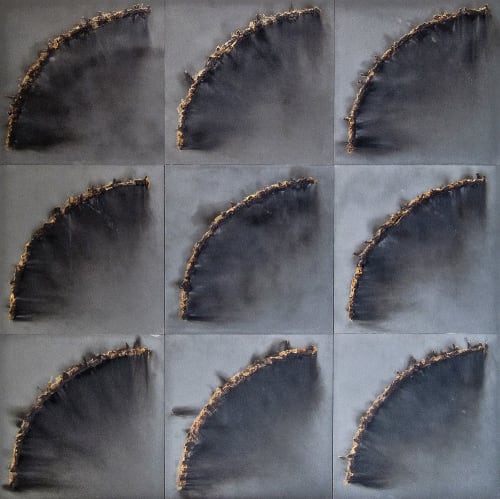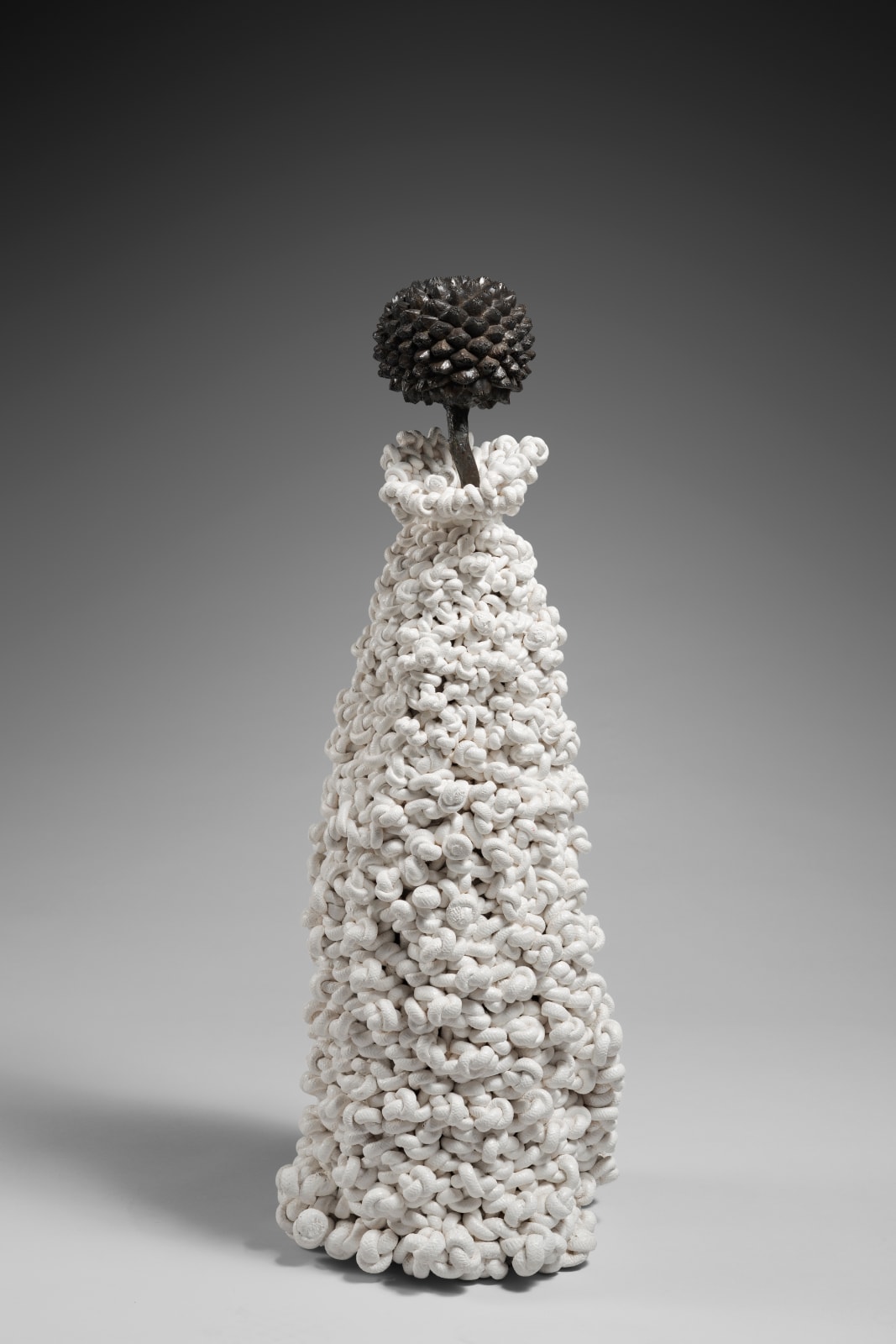CHRISTIAN JACCARD
‘Black is the colour of the universal substance of prima materia and primordial non-differentiation. It absorbs the light and does not return it. It evokes the darkness of the night, the darkness of our origins, the gulf-like depths of the abyss. But thanks to the abyss, it embodies the fertile earth, the receptacle that prepares the rebirth of life. And in my dreams, the appearance of black invites me to get in touch with my primitive instinctive universe, to bring enlightenment, whereas white tends to oppress me.’
Christian Jaccard
Since the late fifties, Christian Jaccard has been experimenting with various combinatorial techniques and processes in a quest for traces, prints and marks.
He begins by taking the prints of fishbones and other frameworks from the sand and transferring them to lithography. He then creates "do-it-yourself-assemblies", scale tools and boxes, boxes, chests and cases containing his tools made with strings and ropes of linen, hemp, jute, and sisal.
Jaccard uses these waste materials for their textures and knots, ligatures or ties them. He makes prints on canvas by engraving these same objects and exposes them together like Couples.
From 1973 onwards, combustion became a decisive and spectacular element of his creative principle, as did Yves Klein's fire paintings. He uses fire to burn his works or those of others to make relics. He continues to test leather and paper for fire.
In the 1980s, he made small gold sculptures from his Tools made of scrap materials to introduce an element of questioning about the intrinsic value of a work – "the quality of things." He creates reinforced tools by covering them with graphite.
From 1986 onwards, he braided wicks on iron or PVC frames for the Supranodal Concept series, some of which could be monumental and developed more radical combustion processes to create other burns.
Christian Jaccardwas born in 1939 and lives and works in Paris. His first solo exhibition took place in Paris in 1962. Christian Jaccard has wanted to radically free himself from the traditional codes of painting since the 1960s, in an approach similar to that of the Supports/Surfaces movement.






